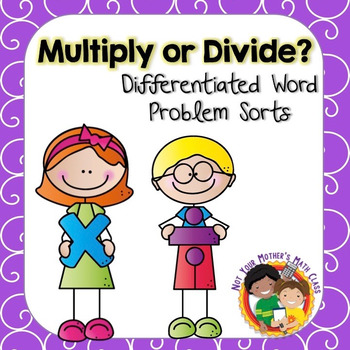Multiply or Divide - Differentiated Word Problem Sorts
- PDF
Also included in
- Do your students have difficulty choosing the correct operation when solving word problems? This word problem sort can be used as a math center to provide extra practice with these skills. It includes addition, subtraction, multiplication and division. There are 8 sorts in each file (24 different soPrice $6.75Original Price $9.00Save $2.25
Description
Many students have difficulty choosing the correct operation when solving word problems. These differentiated multiplication and division word problem sorts are great for use with Interactive Notebooks or to make posters that can be displayed on bulletin boards. Students sort the word problems and glue them on the correct side of a t-chart before solving. To download a FREE SAMPLE click here.
This file includes 8 different multiplication and division sorts, each with a different theme:
Basic Facts to 9s - School Supplies
Basic Facts to 12s - Picnic
Basic Facts to 9s higher division numbers - Pets
Basic Facts to 12s higher division numbers - Exercise & Sports
Basic Facts to 9s with remainders - Class Parties
Basic Facts to 12s with remainders - Arts & Crafts
Multiples of 10 - Aquarium
Multiples of 10 with remainders - Zoo
Links to Other Word Problem Sorts:
© Not Your Mother's Math Class
The buyer is entitled to make copies for single classroom use. To share with colleagues please purchase multiple licenses (for a 50% discount) at checkout. All rights reserved.






